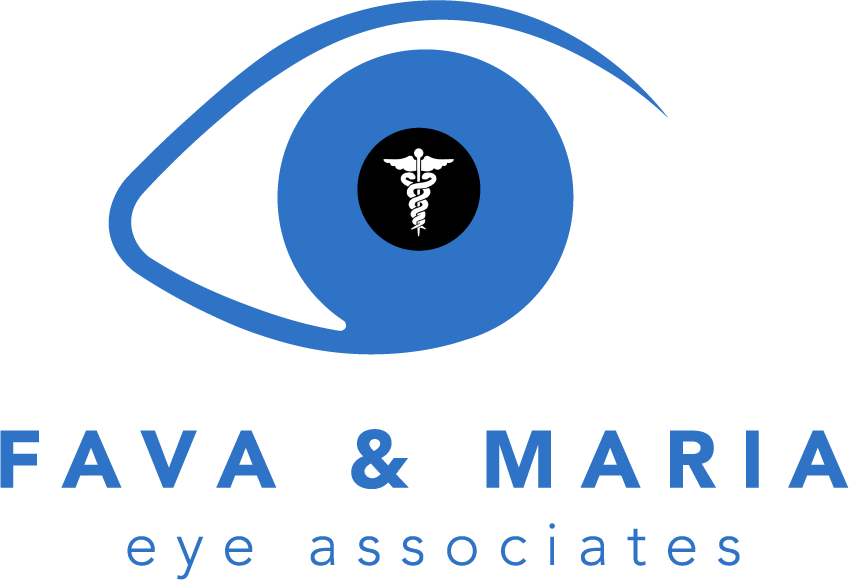
Diabetes is associated with several eye health issues including cataracts and glaucoma, but the most well known diabetic eye disease is diabetic retinopathy.
Diabetic Retinopathy
Diabetic retinopathy is an eye disease that only affects diabetics. It occurs when the fragile vascular network that supplies the retina – the light sensitive tissue at the back of the eye that helps us see – begins to swell or leak. During the beginning stages of the disease, there may be no noticeable symptoms, so it’s important to have your eyes checked at least once a year, if you have diabetes.
Once symptoms of diabetic retinopathy do develop, they can include: dark or black spots in your visual field, or blurry vision, and it increases over time. This is a result of bleeding at the back of the eye, which prevents a clear image from being transmitted from the retina to the brain.
Whether you have type 1, type 2, or even just gestational diabetes, you are at risk for developing diabetic retinopathy. The longer you have had the disease, the greater the risk. It is essential to keep your blood sugar levels under control to prevent vision loss, and this may require a trip back to your primary care physician.
Treating diabetic retinopathy can include vitrectomy, replacing the inner gel-like substance that supports the eyeball structure, and laser surgery.
What Is Macular Edema Eye Disease?
Besides diabetic retinopathy, a common effect of diabetes on eyes is macular edema. The area on the retina where your best vision is found is called your macula. When the blood vessels near the center of your retina are damaged, they can leak fluid into this area causing blurry vision. This is called macular edema, which is the most common form of vision loss and eye problems for people with diabetes, particularly if left untreated.
How Is Diabetic Retinopathy treated?
To best treat diabetic retinopathy and the other effects of diabetes on eyes, an effective partnership between you, your primary care physician and your ophthalmologist is essential. The current primary treatment option for diabetic retinopathy is laser eye surgery, or laser photocoagulation; however, injectable medications similar to those used for macular degeneration are growing to widespread use for retinopathy with diabetes. Laser eye surgery occurs using the “pan retinal” laser, which the ophthalmologist uses to make tiny burns on the retina surface. This destroys damaged retinal tissue and helps the healthy retina to recover from the eye problems of diabetes. Macular edema is also treated with laser eye surgery, but in a more precise and directed fashion to help dry out the affected retinal area. These treatments are not a cure for retinopathy with diabetes and often are only able to stabilize the eye disease rather than reverse the damage. Diabetic eye exams play a crucial part in discovering the eye problems from diabetes, allowing eye doctors to treat and stabilize the retinopathy from diabetes earlier and examine any other interactions of vision and diabetes.
How Do I know if I have Diabetic Eye Disease or Diabetic Retinopathy?
With vision and diabetes, you may not know if you have diabetic eye diseases or retinopathy with diabetes. There are often no signs of the effect of diabetes on eyes exhibit when the disease begins. Your vision will not change much, and you won’t feel any pain from the diabetic retinopathy. The danger is that if you don’t know you have retinopathy with diabetes or another diabetic eye disease, and you don’t have a doctor to treat the eye disease, it could get much worse. By the time you have problems with your sight, it might be too late to treat the eye disease.
The best way to spot eye diseases and the interactions between your vision and diabetes is to get a diabetic eye exam by an ophthalmologist on a regular basis. An ophthalmologist is a medical doctor with specialized training in diagnosing and treating all eye diseases–including retinopathy with diabetes–and disorders, and is the only eye care provider professionally qualified to perform laser eye surgery or diabetic retinopathy laser treatment.
See an ophthalmologist for a diabetic eye exam promptly if you experience any of the following symptoms:
- Blurred vision that lasts more than a few days
- Blurred vision that is not associated with a change in blood sugar
- Floaters
How Often Should I Get A Diabetic Eye Exam?
To stay on top of vision and diabetes, Dr. George Fava recommends people with diabetes have a diabetic eye exam by an ophthalmologist at least once a year. Remember that you can have diabetic retinopathy without any signs, but if your doctor finds it early, laser eye surgery and other treatments for eye disease can help save your sight.
Pregnant women with diabetes should receive a diabetic eye exam early in the first trimester and every 1 to 3 months during pregnancy because diabetic retinopathy can progress much more rapidly during pregnancy.
Recent studies show that intensive control of diabetes with self-monitoring of blood sugar levels and multiple daily insulin injections or an insulin pump can significantly slow the development of diabetic retinopathy and other complications and eye diseases from diabetes. As always, early diagnosis of diabetes, the effective control of blood sugar levels and hypertension through diet and exercise, and diabetic eye exams all work together to help control eye diseases associated with diabetes.
What Other Eye Diseases Affect People With Diabetes?
Dr. Mark Maria notes if you have diabetes, you are likely to get eye diseases like cataracts at a younger age, and your chances of developing glaucoma are doubled, along with facing the possibility of retinopathy with diabetes.
Also in the interaction of vision and diabetes, cataracts can occur. Cataracts are a clouding of the natural lens of the eye that often occur due to the interaction of vision and diabetes. The normal lens of the eye is clear and brings light into focus so we can see. When the lens becomes cloudy, the vision is usually decreased from the eye problems of diabetes. Fortunately, modern cataract surgery is one of the most successful operations performed today and most cataracts can be cured by eye surgery.
Glaucoma is really an eye disease of the optic nerve. With the interaction of vision and diabetes, fluid pressure inside the eye can increase and cause damage to the optic nerve, resulting in blind spots. The optic nerve carries the images we see from the light-sensing retina at the back of the eye to the brain. You might not know you have glaucoma until you lose vision because there are no signs. Glaucoma is treated with medicines, laser eye surgery and other kinds of treatments.


Saturday By Appointment Only